![]()
![]()
![]()
Use LEFT and RIGHT arrow keys to navigate between flashcards;
Use UP and DOWN arrow keys to flip the card;
H to show hint;
A reads text to speech;
45 Cards in this Set
- Front
- Back
|
Confucianism
|
Chinese philosophy formulated formulated from Confucius based on a system of ethics and moral responsibility
|
|
|
Confucius
|
Kong Fuzi a Chinese philosopher who influenced the development of Chinese thought an culture round 550- 478 a.d.
|
|
|
Daoism
|
Chinese philosophy formulated by Lao Zi holding that dao is the underlying principle that moves through all of nature with which humans must come into harmony
|
|
|
Lao Zi
|
was the philosopher who formulated Daoism
|
|
|
Flashing
|
is the process where molten bronze runs out between sections of piece mold where they come together in joints
|
|
|
Flange
|
a vertical flat projection standing at right a angle to the surface of a bronze vessel and is derived from flashing
|
|
|
Luoyang
|
Is the new capital established when Zhou moved from Changan eastward
|
|
|
Piece-mold method
|
casting method used by Chinese to make bronze vessels, with section models assembled from many pieces
|
|
|
Gui
|
is a ceremony vessel for holding food
|
|
|
Split animal
|
is a Shang Chinese animal mask design with the eyes protruding above the surface of the vessel and frequently having each half, right and left center, visible separately as animals seen from the side taken together the two make up the full face 7th to 11th century
|
|
|
Scapulimancy
|
A neolithic method of prognostication employed by the late Shang Chinese shaman; applying heat to the shoulder blades of a deer, tortoise, and cattle and receiving answers according to the cracks that appeared 13th to 11th century b.c.
|
|
|
Boshan Lu
|
incense burners in the form of the cosmic mountain, Early Han, 206 b.c.-8 a.d.
|
|
|
Chamber tombs
|
tombs imitating terrestrial architecture in diminished size. Several chambers have painted walls that alluded to the various functions of domestic architecture of the imperial or wealthy class
|
|
|
cosmic mirrors
|
circular bronze mirrors that came into use during the eastern Chou period and acquired a cosmological symbolism during the Han period- miniature replicas of the ideal world around 200 b.c.
|
|
|
The Great Wall
|
begun in 214 b.c. by Quin Shi Huang Di to protect China from invasions bay barbarians to the north
|
|
|
King Cheng
|
The King of Qin, who built the great wall
|
|
|
Lacquer
|
The sap of a tree native to south china colored by adding finely ground minerals
|
|
|
Shaft Tombs
|
a vertical pit at the bottom of which a wooden coffin chamber was constructed, often one inside of another
Late Zhou, western han 200 b.c. |
|
|
Yin and Yang
|
Chinese duality yin is the principle of darkness, dampness, softness, and passiveness, yang symbolized brightness, dryness, hardness, and action
|
|
|
Harmika
|
the cubic altar form at the top of a stuppa, derived from the ancient Fire altar of Vedic times, appears as part of the Songyuesi brick pagoda at Mount Song, 520 a.d.
|
|
|
pagoda
|
Chinese storied tower, perhaps fashioned after the great stupa at peshawar.
|
|
|
Pure Lands
|
In Buddhist teaching the four paradise of the Buddhas of the four directions, where the faithful might be reborn after death, described in the pure land sutra
|
|
|
Six dynasties
|
term used to describe the rule of South China from the end of the Han dynasty to the beginning of the Sui dynasty 220 a.d.
|
|
|
Mandala circle
|
microscopic diagram of cosmos, Basis of Indian temple plans and Chinese cosmic mirrors
|
|
|
Neo- Confucianism
|
A reformation of Confucianist thought in China, involving a synthesis of Confucianism, Daoism, and Buddhism, Song Dynasty
|
|
|
Chan
|
meditation, a form of sinicized Buddhism in which meditation combined with self-reliant work was perceived as the primary means to discovering reality, 6th century
|
|
|
Sinicization
|
modification through Chinese influence
|
|
|
Zun
|
type of bronze vessel
|
|
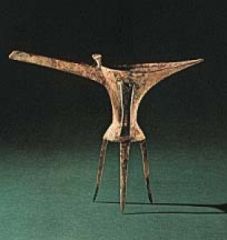
|
Jue ceremonial vessel, bronze, Early Shang dynasty 17th century b.c.e, 10 in
|
|

|
Gui bronze, Early Zhou 11th century b.c. 9 in
|
|
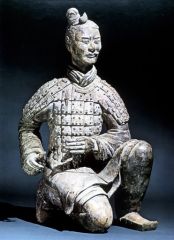
|
Kneeling crossbowman, Qin dynasty,
|
|

|
Shakyamuni and Prabhutaratna, Norhtern Wei dynasty, gilded bronze, 10 in high, 6th century a.d.
|
|

|
Colossal Buddha, black limestone, Tang dynasty 675 a.d.
|
|

|
Cemetery, Shaolin Monastery, Tang dynasty, 220 brick funerary monuments built to house the ashes of monks
|
|

|
Travelers Among Mountains and Streams, by Fan Kuan, ink and slight color on silk, Northern Song 11th century, finest single landscape painting ever produced in China, Monumental composition of towering cliffs rising behind a Buddhist temple, hidden among trees of a rocky promontory, in the middle distance, meticulous, different kinds of strokes, Confucian in concept,
|
|
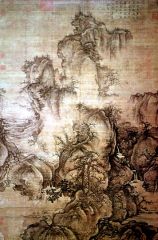
|
Early Spring, by Guo Xi, ink and slight color on silk, Northern Song 11th century a.d., mannered and less true to reality of nature, ambiguity, who he thinks it should exist
|
|

|
Dwelling in the Fuchun Mountains, Hunag Gongwang, hand scroll, ink on paper, Tuan 1340
|
|

|
Li Kan, Bamboo. hanging scroll. ink on silk, yuan dynasty
|
|

|
Stem cup, blue an white porcelain, yuan dynasty, 14th century, under glaze blue painting on white porcelain
|
|
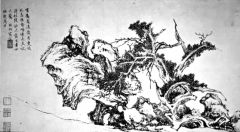
|
Seven Jupiter, Wen Zhengming, hand scroll, ink on paper, Ming, 1532, mature style, symbolic expressionism
|
|

|
Huang Gongwang in the Fuchun Mt, Yuan dynasty, 1350, hand scroll ink on paper
|
|

|
Two sheets from an album of ten paintings by Zhu Da, ink on paper, Qing 17th century, expression
|
|
|
The Imperial Palace
|
Ming Dynasty
|
|
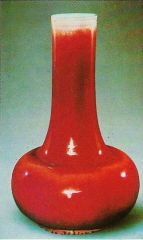
|
oxblood vase
|
|

|
William Thornton, U.S. capitol, Washington, D.C., 1792,
|

